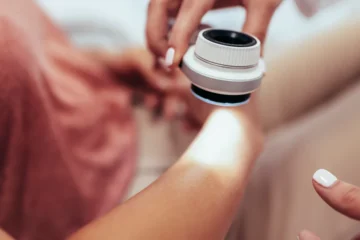Dermatology consultations are crucial for addressing a wide range of skin, hair, and nail concerns. Whether you’re dealing with acne, eczema, signs of aging, or other dermatological issues, a consultation with a dermatologist can provide valuable insights and personalized treatment recommendations. In this comprehensive guide, we’ll walk you through what to expect during a dermatology consultation, from making an appointment to follow-up care.
1. Making an Appointment
The first step in navigating a dermatology consultation is making an appointment with a board-certified dermatologist. Here’s how to get started:
- Research Dermatologists: Start by researching board-certified dermatologists in your area. You can use online directories, ask for recommendations from friends or family, or check with your primary care physician for referrals.
- Check Credentials: Verify that the dermatologist is board-certified by the American Board of Dermatology or another accredited board.
- Schedule an Appointment: Contact the dermatologist’s office to schedule an appointment. Be prepared to provide your contact information, insurance details, and a brief overview of your skincare concerns.
2. Preparing for Your Appointment
Once you’ve scheduled your dermatology consultation, it’s essential to prepare for your appointment:
- Compile a List of Concerns: Make a list of your skincare concerns, including any symptoms you are experiencing, when they started, and any factors that may worsen or improve them.
- Gather Information: Bring any relevant medical records, including previous skin treatments, allergies, medications, or medical conditions.
- Take Photos: If you have a skin condition that comes and goes, such as a rash or acne flare-up, take photos to show your dermatologist what it looks like at its worst.
- Avoid Makeup and Nail Polish: If possible, avoid wearing makeup or nail polish to your appointment, as this can make it difficult for your dermatologist to examine your skin, hair, and nails.
3. What to Expect During Your Appointment
During your dermatology consultation, you can expect the following:
- Medical History Review: Your dermatologist will review your medical history, including any previous skin conditions, allergies, medications, or treatments you have tried.
- Discussion of Concerns: You will have the opportunity to discuss your skincare concerns with your dermatologist. Be prepared to describe your symptoms, when they started, and any factors that may aggravate or alleviate them.
- Physical Examination: Your dermatologist will perform a thorough physical examination of your skin, hair, and nails. They may use a magnifying glass or a dermatoscope to examine specific areas more closely.
- Diagnosis and Treatment Recommendations: Based on your medical history and physical examination, your dermatologist will make a diagnosis and recommend a treatment plan. This may include prescription medications, topical treatments, lifestyle changes, or cosmetic procedures.
- Education and Prevention: Your dermatologist will provide you with information about your condition, including what causes it, how it can be treated, and how it can be prevented in the future. They may also recommend regular skin checks or screenings for skin cancer.
- Follow-Up Plan: Depending on your condition, your dermatologist may recommend follow-up appointments to monitor your progress or adjust your treatment plan as needed.
4. Common Dermatology Treatments
Depending on your specific concerns, your dermatologist may recommend one or more of the following treatments:
- Topical Medications: Prescription or over-the-counter creams, ointments, or lotions to treat skin conditions such as acne, eczema, psoriasis, or fungal infections.
- Oral Medications: Prescription medications such as antibiotics, antihistamines, or retinoids to treat more severe or widespread skin conditions.
- Injectable Treatments: Injectable treatments such as botulinum toxin (Botox) or dermal fillers to reduce wrinkles, fine lines, or volume loss.
- Laser Therapy: Laser therapy uses concentrated beams of light to target specific skin concerns such as wrinkles, age spots, acne scars, or unwanted hair.
- Chemical Peels: Chemical peels use chemical solutions to exfoliate the skin and improve its appearance. They can help reduce the appearance of acne, hyperpigmentation, fine lines, and uneven skin tone and texture.
- Microneedling: Microneedling involves using a device with fine needles to create tiny punctures in the skin, stimulating collagen production and promoting skin rejuvenation. It can help improve the appearance of wrinkles, acne scars, and uneven skin texture.
5. Follow-Up Care
After your dermatology consultation, it’s essential to follow your dermatologist’s recommendations and attend any follow-up appointments as scheduled. Here are some tips for follow-up care:
- Follow Your Treatment Plan: Be sure to follow your dermatologist’s treatment plan as prescribed, including taking any medications as directed and using any topical treatments as recommended.
- Monitor Your Progress: Keep track of any changes in your skin, hair, or nails and report them to your dermatologist at your follow-up appointments.
- Ask Questions: If you have any questions or concerns about your treatment plan, don’t hesitate to reach out to your dermatologist for clarification.
- Schedule Regular Skin Checks: Depending on your condition, your dermatologist may recommend regular skin checks or screenings for skin cancer. Be sure to schedule these appointments as recommended.
Conclusion
Dermatology consultations are an essential step in addressing a wide range of skin, hair, and nail concerns. By scheduling an appointment with a board-certified dermatologist and following these steps for preparation and follow-up care, you can receive expert guidance and personalized treatment recommendations to help you achieve healthy, beautiful skin. If you’re experiencing any skincare concerns, don’t hesitate to schedule a consultation with a dermatologist today.



